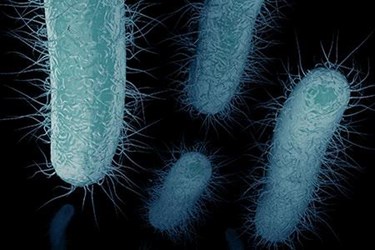Bacteria Monitoring In 3D

By Kevin Westerling,
@KevinOnWater

Monitoring of bacteria in drinking water has come a long way, but today's most utilized processes are still far from perfect. Current online processes offer near-instant results, but often have issues related to O&M, reliability, and affordability. Lab testing can provide the desired accuracy, but results are too slow (up to three days) for utilities to react to emergencies in a timely manner. While we await the perfect system, the perfect stop-gap technique may have been developed — an online system with just enough speed and reliability to outperform current methods where it counts, in terms of prompting fast action and protecting consumers from microbial contamination exposure.
Recorded in Scientific Reports by researchers in Denmark responsible for the development, including members from technology company Grundfos, water utility HOFOR A/S, and the Technical University of Denmark, the monitor is based on 3D image recognition. Rather than rely on sensors that require contact with bacteria, often resulting in undetected contaminants, this new method utilizes digital microscope scanning to distinguish between bacteria and abiotic particles according to their shape and patterns of light diffraction. The system considers 59 parameters to make the distinction, referencing an algorithm developed from the differing characteristics of constituents. Within 10 minutes, utilities can “see” when, where, and how much non-specific bacteria is present in the distribution system, allowing for targeted sampling and verification of the cause, potentially followed by a change in treatment or rerouting of water flow to protect end users. The system is also chemical-free, low-maintenance, and doesn’t create chemical waste, which are three keys cited by the researchers for deployment throughout a distribution network.
What’s Wrong With Existing Tech?
As mentioned, contact sensors will often miss bacteria in drinking water because the water is mostly clean, therefore the probability of scant contaminants coming in contact with the sensor is low.
More commonly used is the 100-year-old method of cultivating samples in the lab, which is laborious in addition to being time-consuming. While it gives indication of where bacteria were present, it doesn’t offer temporal or quantity data.
Flow cytometry has recently been automated for online detection of bacteria and performs as well or better than the 3D method with regard to speed and reliability — flow cytometry is 95+% accurate, while 3D offers 90 ± 7% accuracy for monotype suspensions and 78 ± 14% for mixed-type suspensions. However, flow cytometry has a fatal O&M flaw, as noted in Scientific Reports: “The method requires chemical staining solutions and may thus be limited to locations where these can be stored and exchanged regularly.”
Adenosine triphosphate (ATP) testing, an indirect indicator method that monitors bacteria via bioluminescence, is yet another online option stymied by the requirement for chemical reactants.
Finally, indirect sensors for turbidity, conductivity, etc. have been used to help determine bacterial content — part of the quest for a quick-response, low-maintenance indicator — but the measurement parameters don’t fit the task. As a result, the researchers assert “they are likely to show false positives as well as false negatives in terms of microbiological pollution detection.”
Considering all of the above, they further state: “Conclusively, the delay and limitations associated with current growth-based methods and the missing specificity of current online methods make it practically impossible to proactively react on contamination events in today’s drinking water distribution systems.”
The 3D Alternative
By contrast, the recently developed optical online sensor is specifically designed for practical use and proactive decision-making. Furthermore, it was shown in field tests to operate for up to four months without sensor maintenance, requiring only flow-cell changes at two-month intervals.
Besides the flow-cell used to hold the water sample, sensor components include a dark field imaging setup with light-emitting diode (LED) light source, magnification lens, and complementary metal-oxide semiconductor (CMOS)-based camera arrangement, as well as an image analysis system to identify and classify individual particles. Each particle gets snapped up to 40 times to inform the assessment, sounding alarms at the server level in response to bacteria spikes or worrisome patterns of development.
If a picture’s worth a thousand words, what are 40 images worth? On the whole, when considered alongside the 10-minute turnaround time for reliable, actionable feedback, it means greater protection at the tap for consumers — which is to say, it’s worthy of attention.
Learn more about the promising new technology here.
